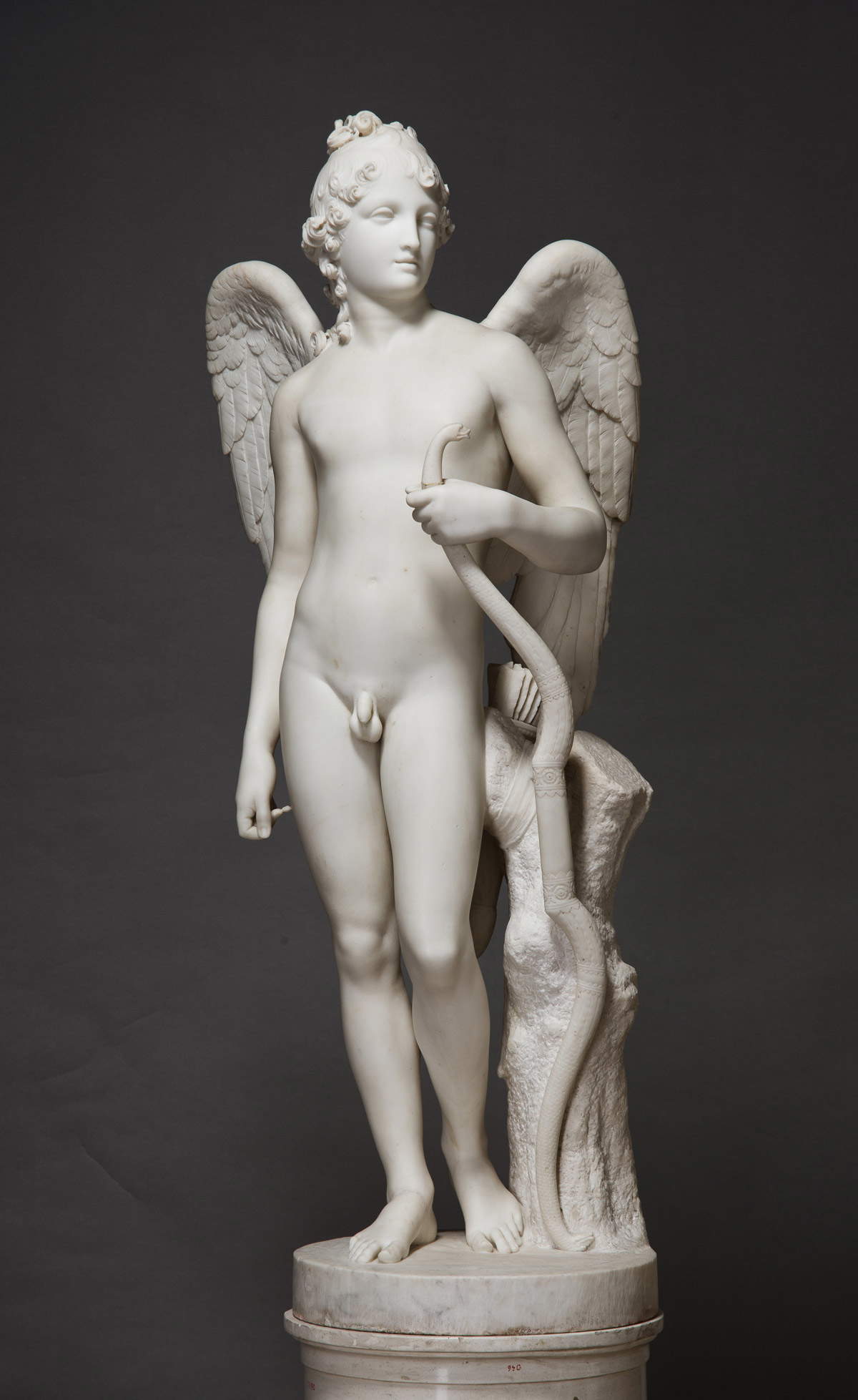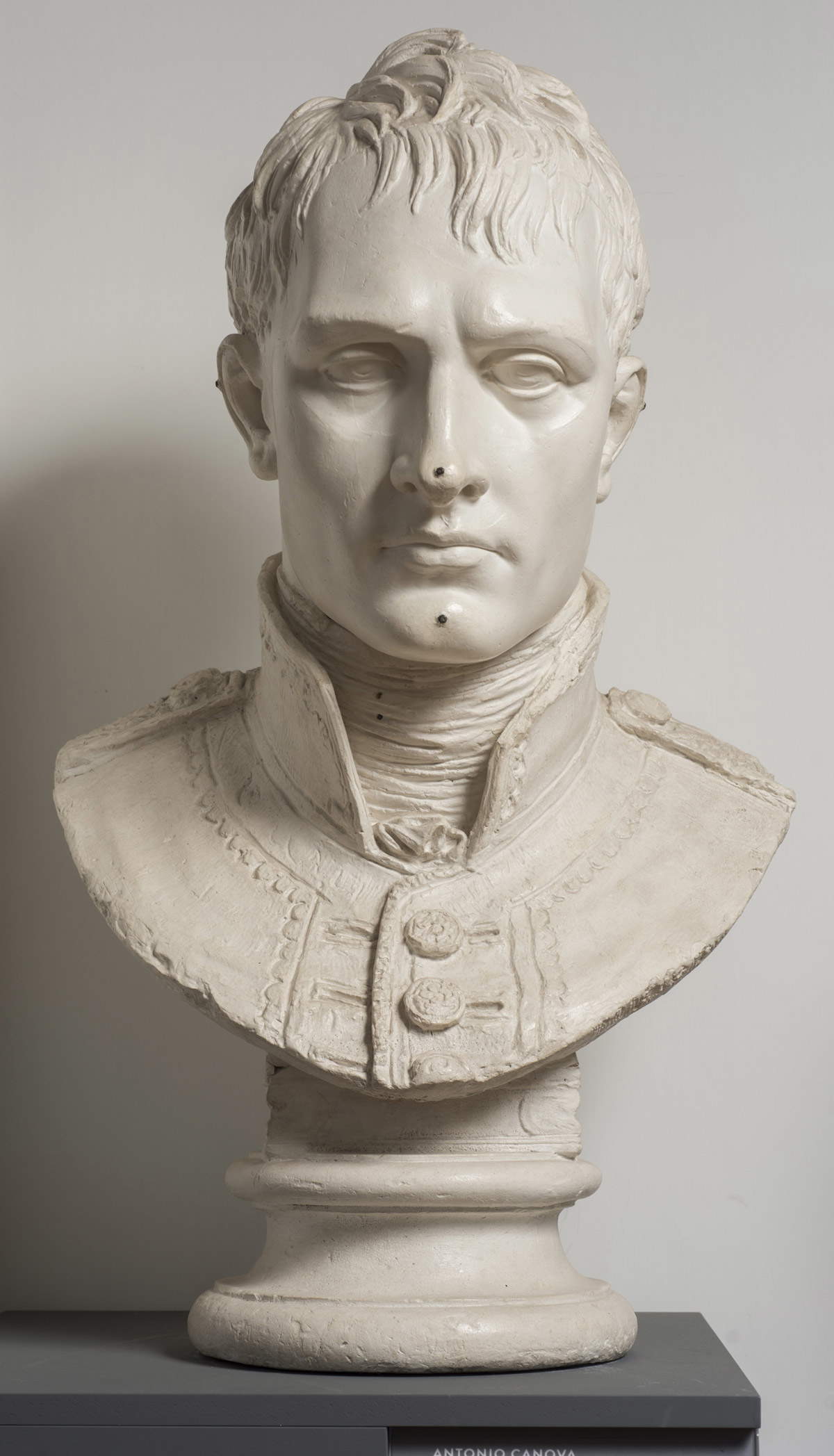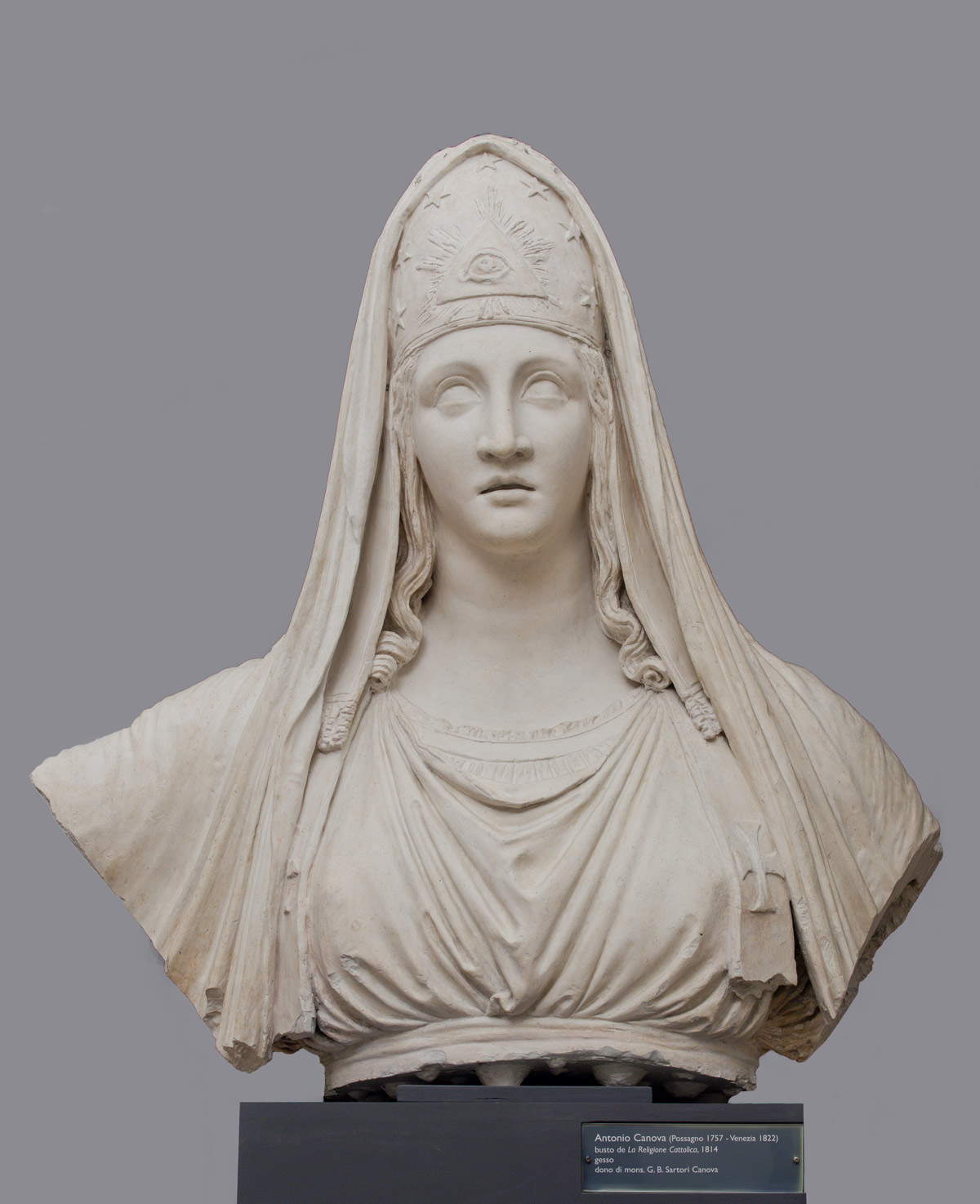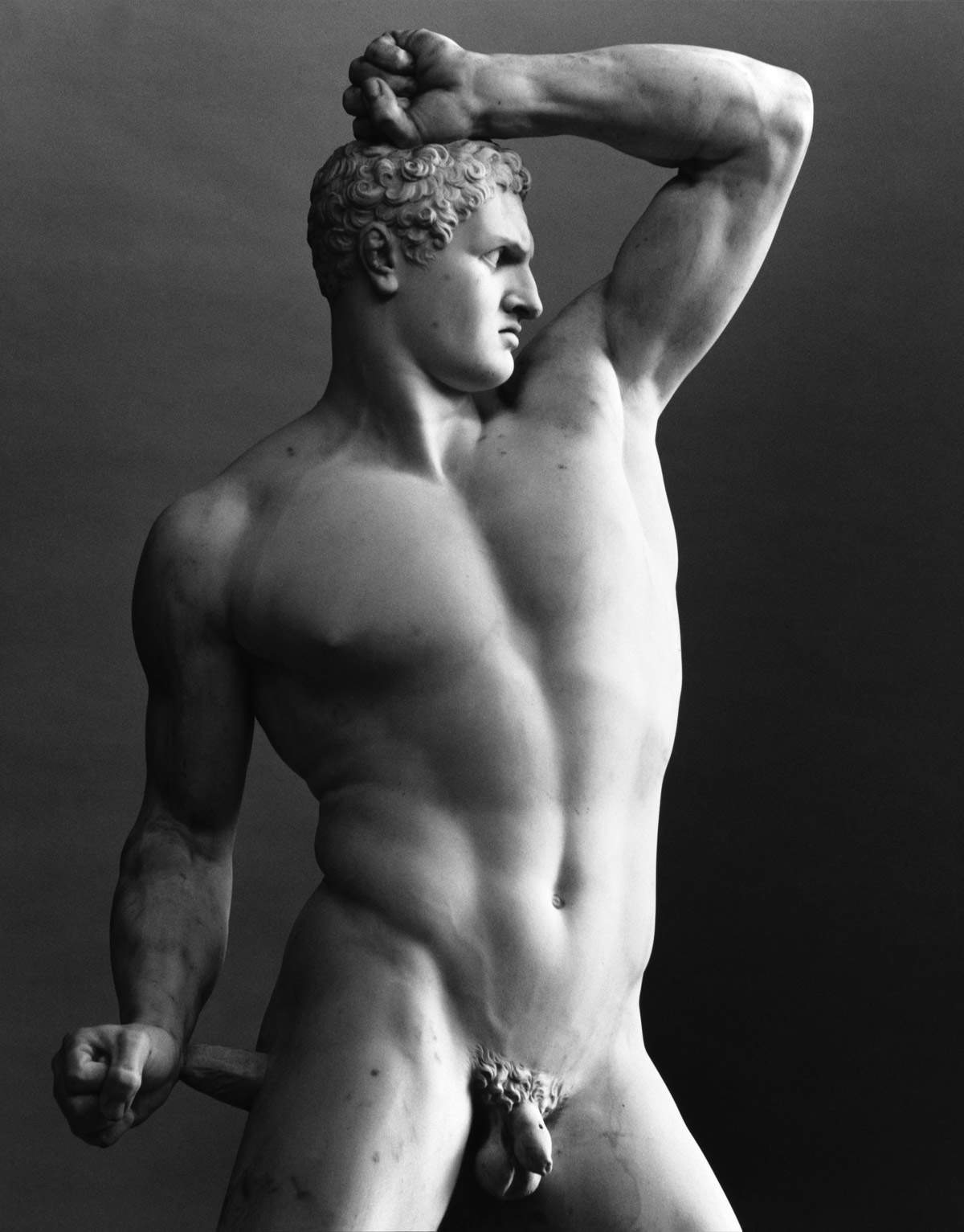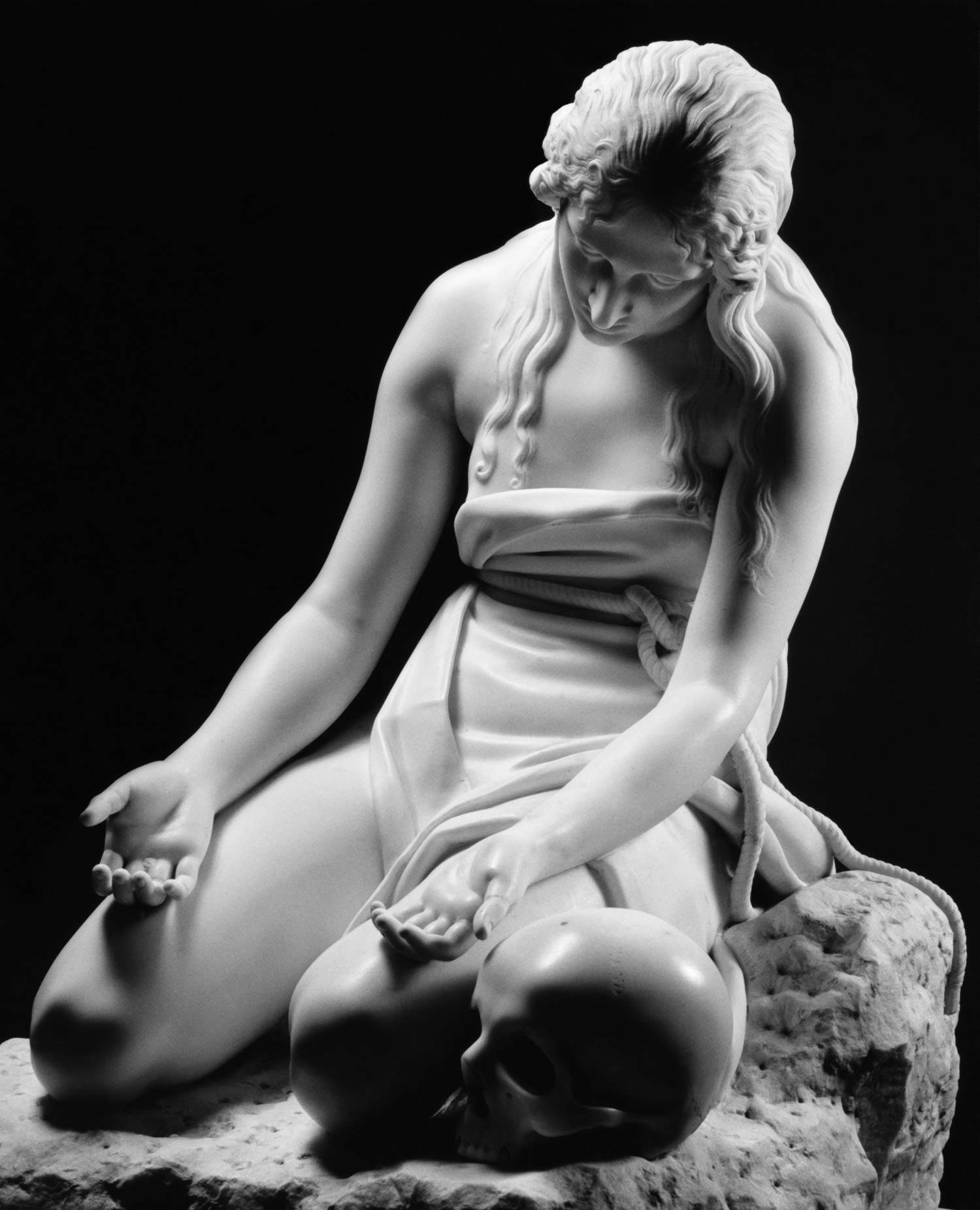by Redazione , published on 11/10/2019
Categories: Exhibitions
/ Disclaimer
From October 9, 2019 to March 15, 2020, the Museum of Rome at Palazzo Braschi is hosting the exhibition Canova. Eternal Beauty
From October 9, 2019 to March 15, 2020, the Museum of Rome at Palazzo Braschi is hosting the exhibition Canova. Eternal Beauty, a review entirely dedicated to Antonio Canova (Possagno, 1757 - Rome, 1822) and his connection with the city of Rome, which the event aims to bring out in all its most important aspects. The exhibition, curated by Giuseppe Pavanello (one of the foremost experts on the Venetian artist) and organized in collaboration with the Accademia Nazionale di San Luca and the Gipsoteca e Museo “Antonio Canova” in Possagno, presents to the public more than 170 works by Canova and artists contemporary with him with the intention of recounting, in thirteen sections, the art of the master of neoclassicism and the context that the sculptor found upon his arrival in Rome in 1779, at the age of twenty-two.
Defining the plot of the narrative will be important loans from various Italian and international museums such as theHermitage in St. Petersburg, the Vatican Museums, the Antonio Canova Gypsotheca and Museum in Possagno, the Civic Museum in Bassano del Grappa, the Capitoline Museums, the Correr Museum in Venice, the National Archaeological Museum in Naples, the Academies of Fine Arts in Bologna, carrara and Ravenna, the National Academy of San Luca, the Musée des Augustins in Toulouse, the Strada Nuova-Palazzo Tursi Museums in Genoa, and the Civic Museum in Asolo. The exhibition promises to retrace the itineraries made by the sculptor in his discovery of Rome, from his first stay and to deepen, through the presentation of drawings, sketches, models and plaster casts, including large-format ones, the artist’s work for the great funerary Monuments of Clement XIV and Clement XIII, and for the Monument to the last Stuarts. There will then be an opportunity to evoke the relationship between ancient and modern in Canova’s sculpture through a comparison of the artist’s marbles, including theWinged Cupid from the Hermitage in St. Petersburg, with ancient marbles such as theEros Farnese from the National Archaeological Museum in Naples. One room will host a focus on the theme of “classical and neoclassical” and will juxtapose plaster casts of famous ancient masterpieces with those of Canova statues made for Count Alessandro Papafava: theApollo of Belvedere and the Borghese Gladiator will be compared with Antonio Canova’s Perseus Triumphant and the Creeping Boxer.
An important section will be devoted to the fervent activity of Canova’s studio in Via San Giacomo: thus, terracotta sketches, small plaster casts, large-scale models, marbles, and plaster casts of already completed sculptures (theatelier) of Canova was a must for artists, aristocrats, connoisseurs, and travelers passing through Rome will be on display. What’s more, the exhibition will also address the relationship between the sculptor and the literature of his time: a small section will be devoted to the relationship between Canova and Vittorio Alfieri, whose tragedy Antigone, staged in Rome in 1782, presents more than one food for thought in relation to Canova’s figurative revolution. A further section will be devoted to the tumultuous Napoleonic years, and the exhibition will acquaint the public with the artist in his role as Inspector General of Fine Arts of the Papal States, and in his action to recover works of art stolen by the French during the occupation of the Papal States. Finally, in the last room of the exhibition, it will be possible to see one of Canova’s most famous marbles, the Dancer with her hands on her hips, from St. Petersburg (it rotates on its base, as Canova wished, moreover in a mirror-covered setting). Recreating the setting will then be works by great artists of the time such as Gavin Hamilton, Pompeo Batoni, Jean-François-Pierre Peyron and others.
Then there is also a kind of “exhibition within the exhibition”: through thirty photographs by Mimmo Jodice depicting the marbles of Antonio Canova, the public will be able to admire the sculptor’s works through the eyes of one of the greatest masters of photography. In fact, Jodice has managed to offer an unprecedented reinterpretation that aims to be surprising, creating a series of images that have immediately established themselves as one of the most exciting expressions of contemporary photography. It is also complemented by a reproduction of Canova’s most famous sculpture, Cupid and Psyche lying, reconstructed by a robot from a 3-D scan of the preparatory plaster of the sculpture now on display at the Louvre in Paris (the robot incessantly sculpted a 10-ton block of white Carrara marble for 270 hours). The installation (accompanied by a documentary on the creation of the work and a video narration of the fable of Cupid and Psyche, with texts by Giuliano Pisani, voice by Adriano Giannini and music by Giovanni Sollima) is presented by the company Magister, which created it in collaboration with Robotor: it is also meant to be a way to reflect on the reproducibility of works of art.
Opening hours: Monday to Sunday from 10 a.m. to 7 p.m. (the ticket office closes one hour earlier), special openings on December 24 and 31 from 10 a.m. to 2 p.m. Tickets: full price 13 euros, reduced 11 euros (for young people between 6 and 25 years old, over 65, teachers, journalists, MIC Card holders, Generali clients, Carta Freccia holders with Frecce ticket to Rome with travel date prior to the visit maximum 5 days before), reduced schools 4 euros, special family 22 euros (2 adults plus children under 18). Integrated ticket with Museum of Rome: full 19 euros, reduced 15 euros. Free for children under 6, disabled and accompanying person, tour guides, tourist interpreters, ICOMOS members, ICOM and ICCROM members and foreign and national cultural institutes.
The exhibition Canova. Eternal Beauty is sponsored by Generali Italia with the Valore Cultura project. Special partner Ricola, partner Magister, a brand of Cose Belle d’Italia with Robotor, technical sponsor Siat, with the technical contribution of Ferrovie dello Stato. The event is advised by Sky Arte. Catalog published by Silvana Editoriale. For info visit the Museum of Rome website. Below are photos of some of the works on display.
 |
| Antonio Canova, Dancer hands on hips (1806-1812; marble, 179 x 76 x 67 cm; St. Petersburg, The State Hermitage) Photograph © The State Hermitage Museum, 2019 Photo by Alexander Lavrentyev |
 |
| Antonio Canova, Winged Cupid (1794-1797; marble, 142 x 54.5 x 48 cm; St. Petersburg, The State Hermitage) Photograph © The State Hermitage Museum, 2019 Photo by Alexander Koksharov |
 |
| Antonio Canova, Self-Portrait (1812; plaster, 89 x 47 x 39 cm; Rome, Museo di Roma) Photograph © Alfredo Valeriani |
 |
| Antonio Canova, Napoleon First Consul (1801; plaster, 65 x 50 x 30 cm; Rome, Accademia Nazionale di San Luca) |
 |
| Antonio Canova, La Religione (1814/1815; plaster, 110 x 116 x 55 cm; Rome, Accademia Nazionale di San Luca) |
 |
| Antonio Canova, Study for a Funeral Monument to a Pope (pen and watercolor, 50.6 x 39.7 cm; Venice, Fondazione Musei Civici di Venezia, Museo Correr, Gabinetto dei Disegni e delle Stampe) |
 |
| Antonio Canova, Amore e Psiche (plaster, 148 x 68 x 65 cm; Veneto Banca spa in L.C.A.) Photo by Andrea Parisi |
 |
| Antonio Canova, Sleeping Endymion (1819; plaster, 183 x 85 x 95 cm; Possagno, Gypsotheca e Museo Antonio Canova) 2019, Possagno (TV), Fondazione Canova onlus - Gypsotheca e Museo Antonio Canova | Internal Photographic Archive. Photo by Lino Zanesco |
 |
| Antonio Canova, Creugante (marble, 225 x 120 x 62; cm Vatican City, Vatican Museums) © Mimmo Jodice |
 |
| Antonio Canova, Penitent Magdalene (marble, 95 x 70 x 77 cm; St. Petersburg, The State Hermitage Museum) © Mimmo Jodice |
 |
| Canova's eternal beauty on display in Rome, with 170 works |
Warning: the translation into English of the original Italian article was created using automatic tools.
We undertake to review all articles, but we do not guarantee the total absence of inaccuracies in the translation due to the program. You can
find the original by clicking on the ITA button. If you find any mistake,please contact us.

